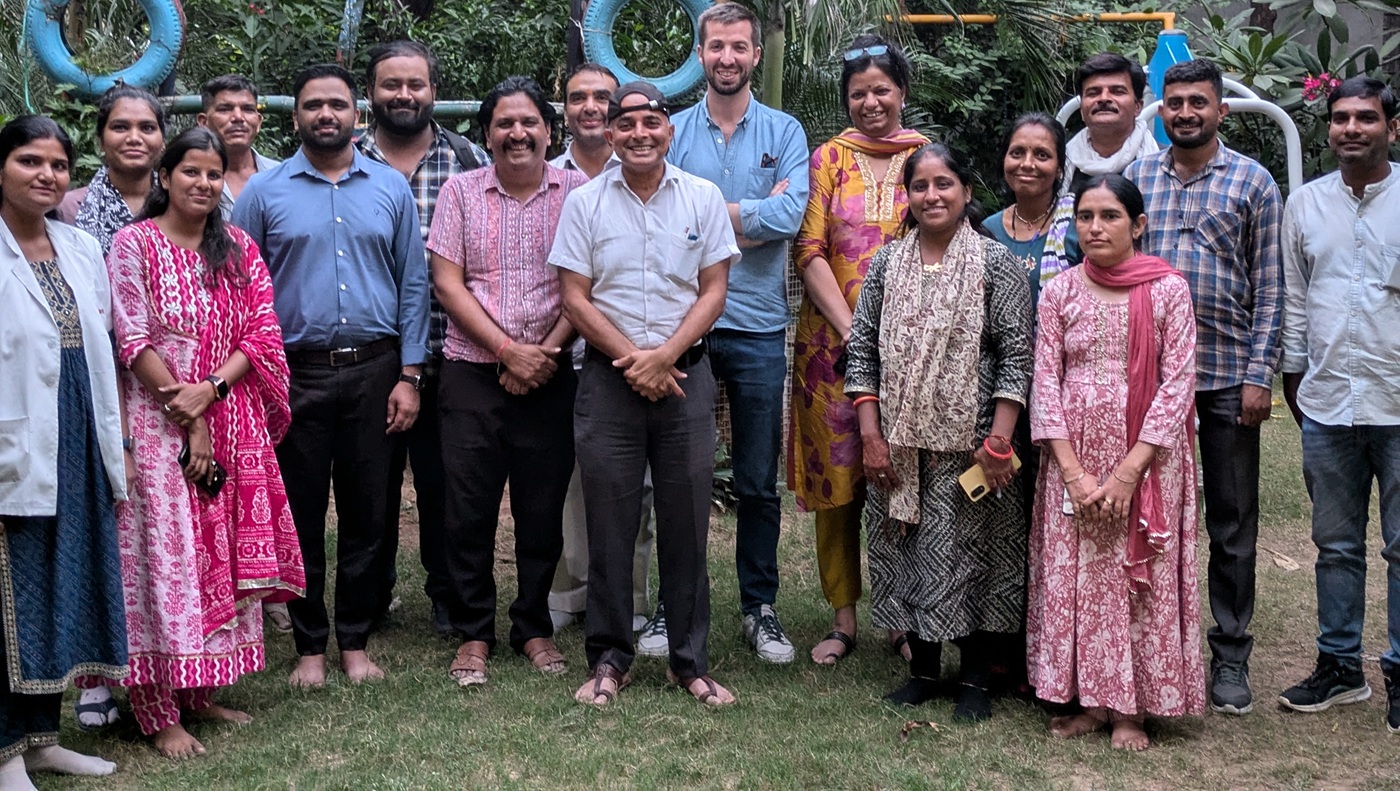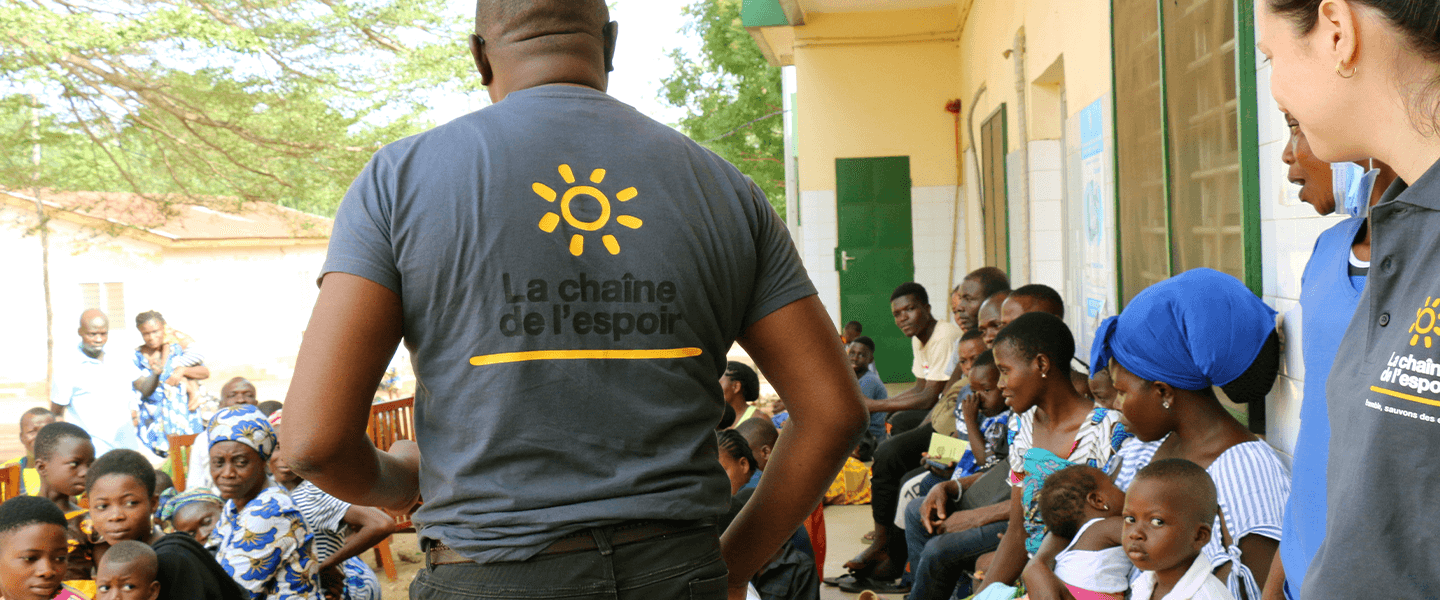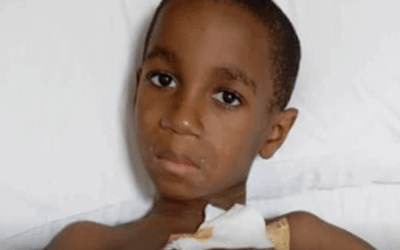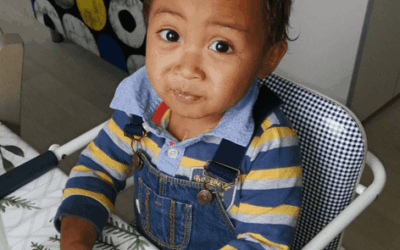India and Nepal: new programs for ever greater impact

La Chaîne de l’Espoir launched its programs in India and Nepal in the same year, 2011. What’s special about these two countries is that we don’t have our own teams on the ground, but work with local organizations.
With Taabar* in India, we criss-cross the slums of Jaipur, Rajasthan, with two mobile clinics: one dedicated to medical care, the other to women and girls (for awareness-raising sessions, donations of menstrual kits or individual gynecological consultations).
In Nepal, with Child Protection Centers and Services (CPCS), we work in 36 school-based health centers in four districts.
We could have gone on like this, developing these programs little by little,“comments Laurence Desvignes, Asia Regional Manager. But at La Chaîne de l’Espoir, we take nothing for granted and know how to question ourselves. So we felt it was important to take a real step back and assess the usefulness of these actions in depth. With a key objective: to meet the needs of beneficiaries and help strengthen healthcare systems, by developing multi-year strategies, among other things.”
Needs studied
To this end, La Chaîne de l’Espoir is implementing a structured method (see p. 19 of Fil de l’Espoir n°21). The first step is to deepen our knowledge of the field, to better understand its needs.
Toussaint Laurent, Asia program coordinator, explains the approach: “As with any survey methodology, the conclusions we draw are based on scientific data and in situ observations”.
Research manager Amaury Frotté joined the team to immerse himself in a vast corpus of bibliographical resources. His mission was to collect the most precise indicators possible. His secret to making data speak for itself? His training as an anthropologist.
“This allows us to put data into perspective with cultural contexts. For example, some countries don’t think of medicine in the same way as we do. Or in India, we often speak of slums as homogeneous entities, whereas communities, languages, religions and castes can be very different. And as I’ve done a lot of work on gender issues in anthropology, this reading can be useful when you want to focus on the health of women and girls, as is the case in India and Nepal.”
In addition, Laurence Desvignes and Toussaint Laurent set off on a mission in the autumn of 2024 to meet their partners, as well as other NGOs, local, national and international institutions and, of course, healthcare and hospital professionals.
“In this way, we gain visibility, build or strengthen networks and, above all, clarify the needs to be addressed,” explains Laurence Desvignes.
Targeted actions
“It’s on the basis of these upstream investigations that we can then direct our action,” adds Toussaint Laurent. For the time being, strategies have not yet been decided, but a number of avenues have already been identified.
“Thanks to meetings in the field, we gain visibility, build or strengthen networks and, above all, clarify the needs to be addressed.”
For India, the first step will be to conduct a field survey, with Taabar, to fine-tune needs in the slums where we operate. “The data is in fact patchy or very unofficial. For some of them, we don’t even know how many people live there. So there’s a lot of work to be done to define the indicators that will enable us, ultimately, to gain in efficiency by targeting the areas where our action is really the most relevant”, explains Toussaint Laurent.
In Nepal, in order to optimize our impact, our ambition will be to refocus our work with our partner on our core business, healthcare.
“Meetings with institutional and hospital players have also highlighted another need: to strengthen basic pediatric surgery in the provinces and specialized pediatric surgery in the capital, Kathmandu. A new mission will be carried out shortly to assess how we can position ourselves in the future to contribute our expertise in fitting out premises, equipment, training surgeons, etc.”, concludes Laurence Desvignes.
The year 2025 will therefore be a pivotal one for our action in these two countries.
* Taabar means child in the Rajasthani language, Marwari. The association was awarded a certificate of recognition and appreciation for its work by the Indian authorities
, in the Best Social Work category in the field of child protection.
2 questions to
Laurence Desvignes, Asia Regional Manager
Why is the meeting phase so important?
Wherever in the world La Chaîne de l’Espoir operates, we never act in isolation. It responds to a real need expressed by populations and governments. That’s why we always seek to integrate ourselves into local cultures and health policies. Exchanges with institutional and governmental players enable us to understand how healthcare systems operate, what the political priorities are, and so on. Similarly, to be effective, we need to coordinate our actions with other humanitarian organizations (national or international). What sense would there be in duplicating what is already in place? To have a real impact, we need to unite and cooperate.
You’re aiming to build multi-year strategies. Why is this?
You aim to build multi-year strategies. Why do you ask?
This represents a major change of horizon. Until now, we’ve tended to work on the basis of annual strategies. The aim now is to build a framework for two or even three years. This
structuring approach gives greater visibility to our partners, funders, donors and all those who support our actions. But it also presupposes a methodical upstream design to keep in step with the realities on the ground and anticipate changes.
Immerse yourself in the daily life of one of the mobile clinics that roam the slums of Jaipur in our online report.
How to build programs
STEP 1: draw up a health map of the geographical area concerned
Based on health, epidemiological and socio-economic data, a map of the public and private players involved, public health programs, government priorities and their regional variations…
“Many resources already exist, produced by individual countries or by international reference organizations (United Nations, World Bank, etc.). The idea is to collect this information and compare it with other countries or geographical areas, to get a clear view of the global context, but also to focus on health issues. This is the first foundation of our programs.
Amaury Frotté, Project Manager
STEP 2: refine your knowledge of the terrain
Through meetings with :
- regional (e.g. health district managers), national (e.g. government, health ministries) and international (e.g. French embassy on site, UN representatives) public players
- national and international NGOs working on site
- players in the healthcare sector (facility managers, healthcare professionals, etc.), etc.
“In India and Nepal, these meetings in the field were also an opportunity to work with partner association teams on financial reporting tools and program evaluation indicators. Our aim is to share the same framework and the same objective of efficiency.”
Toussaint Laurent, Asia Program Coordinator
STEP 3: implement a multi-year strategy
- Consistent with public policy
- In cooperation with local healthcare professionals
- In coordination with other associations
“A strategy can never be built off the ground. No program can be duplicated from one country to another. In Asia, for example, the contexts and our history in India and Nepal, but also in Afghanistan, Laos, Cambodia and Vietnam, are all very different. On the other hand, our determination to be as close as possible to the health issues and needs of local populations is the same everywhere.
Laurence Desvignes, Asia Regional Manager




